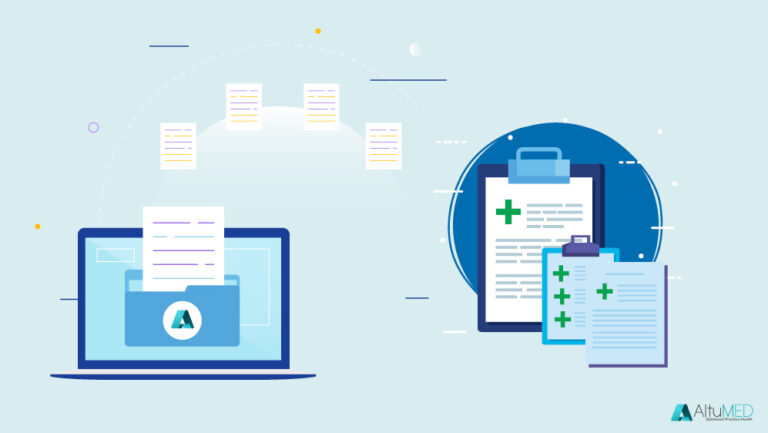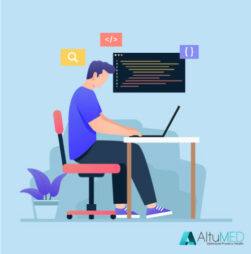
Ten Useful Tips For Efficient Coding Chart Abstraction
Medical coding goes beyond choosing some numbers and alphabets for procedures performed. Coders utilize serious skills needed to extract information from the patient record. This they then combine with their knowledge of reimbursement and coding guidelines to optimize physician payment.
No two medical notes can be same. This sometimes can be intimidating to a newly designated coder. That way, having a compact understanding of Medical Records or Notes is critical to a coder.
In this article, useful tips & tricks about medical coding are shared for novice coders who want to improve their coding skills:
1. Ensure Proper Documentation
Once you have gotten the medical records, make sure all the essential contents of face sheet including administrative & demographic details of the patient (name, gender, age, address, facility and provider information, insurance details etc.) are present along with compiled and signed clinical data (SOAP notes, performed procedure notes, diagnosis etc).
2. Review Code Sets
Before going in coding for a Procedure or diagnosis. Make sure all the necessary materials and tools are within reach. Code sets are composed of numbers and/or letters that identify specific diagnosis and clinical procedures on claims and encounter forms. That includes:
- Physician services/other health services (HCPCS and/or CPTs)
- CPT or HCPCs Coding Manuals
- Updated coding guidelines and polices
- NCD or LCD document provided by CMS or a specific MAC
- NCCI coding protocols for the procedures (MUE and PTP edits)
- ICD-10 Coding Materials and conversion tools
- Medical dictionary for unfamiliar terminologies
- Medical supplies, orthotics, and DMEs HCPCS (A-V codes)
- Drugs/biologics National Drug Classifications (NDC)
3. Perform Proactive Face-sheet/Superbill Analysis
For starters, begin by reviewing and analyzing the provided data. Look for size and complexity of the medical notes. Keep the Payer Policy document close to you in case any reimbursement and compliance regulation issues arise. This is especially important for Medicare beneficiaries.
4. Focus on key elements in the SOAP note
A SOAP or encounter/visit note works on the principles of Subjective, Objective, Assessment and Plan documented and transcripted by the provider. SOAP note includes all the basic and essential information to code an Evaluation and Management code either for an Office visit or Inpatient/Outpatient visit. These are key-points when you’re looking coding the E/M codes.
- History and Physical Report (H&P)
- Chief Complaint (CC)
- History of the Present illness (HPI)
- Review of Systems (ROS)
- Personal, Family, and social history (PFSH)
According to newer updates released, coders can now choose to select the level of E/M code either by Medical Decision Making (MDM) complexity or by the Total Time spend with the patient. Which significantly lowers the documentation burden. While estimating level for E/Ms, make sure you are careful with up-coding or down-coding and utilization of frequent E/Ms. Any outlier or repeated pattern of coding should be pointed and discussed.
5. Analyze Diagnosis Code
Coders can also determine primary and secondary diagnosis from the notes. Do not code diagnoses document as “probable”, “suspected,” “questionable,” “rule out,” or “working diagnosis” or other similar terms indicating uncertainty. Rather, code the condition(s) to the highest degree of certainty. As a medical coder, you do not make diagnoses or treat patients, but you do need a basic understanding of anatomy, physiology and pharmacology to ensure that health information documented accurately.
Make it clear, simple and attainable. The easier it will be for the client to understand your presentation, the more chances of them accepting the offer and getting on board with your company.
6. Analyze Procedure note
A specific practice specialty can work on multiple codes. The contents of a procedure note can drastically change depending upon the specialty of the practice. Coders can improve upon their educational foundations by taking keen interest in that particular specialty. A coder should know the sections, appendices and symbols used in the current year’s CPT manual. Also keep a eye on Add-on codes.
Have occasional sessions with Practice Providers and managers to go through ideas on how to improve overall coding strategies; making sure the codes are being billed alright as they should. This will help coders to dig a little deeper into nuances of optimal coding.
7. Make a query when not sure
If in doubt, ask the physician, remembering “if it’s not documented, it’s not done”. Without sufficient documentation, you cannot code. This will also help understand the coding procedure a little better and communication will also evolve the practitioner’s knowledge on the matter.
8. Perform Audits
Scheduling coding review audits from time to time has a every pronounced effect on billing practices. You may do a quarterly audit (at least annually) to catch coding inaccuracies and help figure out practice coding patterns. Internal audits will also safe-guard the practice from external audits and help track quality of your performance in terms of effective coding and denials. Note any discrepancies and discuss them with the practice manager.
9. Review the Explanation of Benefits
Reviewing EOBS of unpaid and denied claims can lead you to analyze the recurring errors or any human mistakes that can be pointed out in time. Once you catch the error, work as a team to resolve the issue and refile the claim.
10. Make specialty coding profile and protocols
If coding is coming from a single specialty practice make separate protocols for that specialty which will serve as a coding guide. Protocols should include any specific instructions by the rendering or billing provider and also has information on particular medical necessity codes and special modifiers used. The coding protocol should also need to be updated from time to time.
Summary
With ever changing trends happening in medical coding, coders have to stay up-to-date with any changes and revision made to the procedure or diagnosis code.
In conclusion, a coder needs to take following things into consideration:

- Keep learning about the specialties
- Keep track of your performance
- Learn from coding mistakes
- Get training sessions when needed
- Get to know your EMR or EHR better
- Keep performing proactive and retroactive coding audits
- Make queries when you have to
AltuMED PracticeFit enables Medical Billers with an inbuilt scrubber feature, reducing the chances of coding errors to 92%. Schedule a PracticeFit demo to know more:
Subscribe to Our Newsletter!
Subscribe to Our Newsletter!
Enter Your Email Address. We Promise We Won't Spam You
